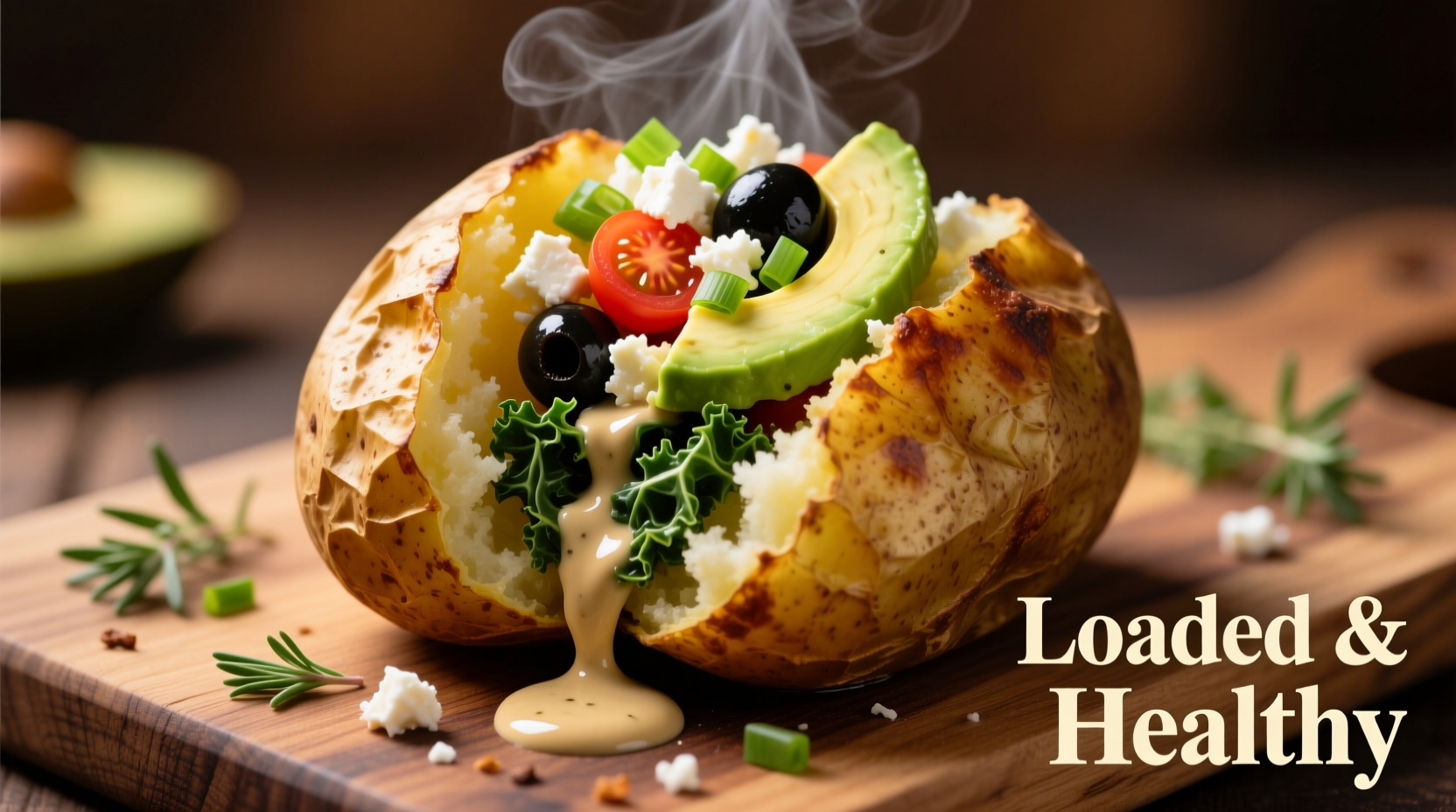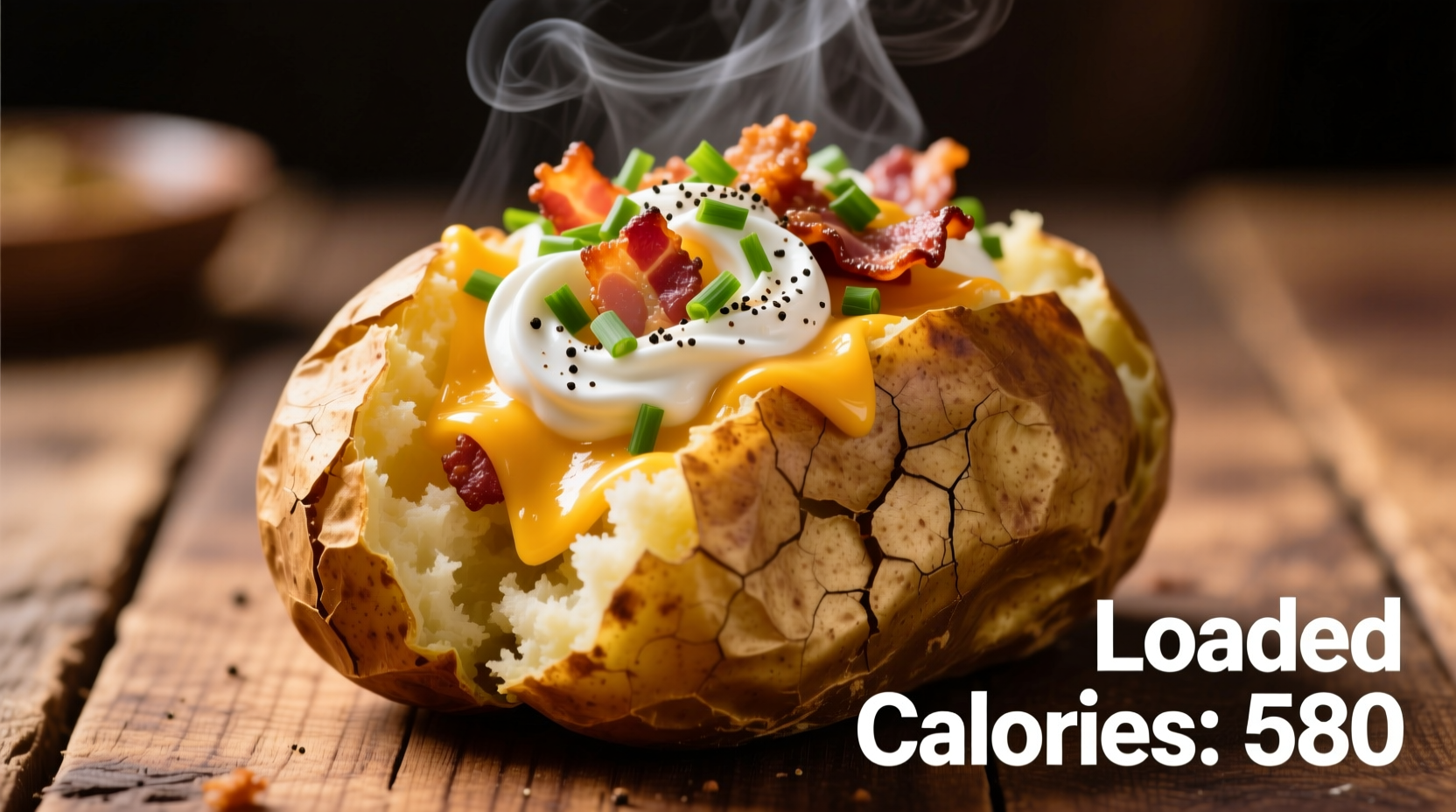Craving a comforting loaded baked potato but watching your calorie intake? You're not alone. Millions of health-conscious eaters face this dilemma daily. This comprehensive guide delivers exactly what you need: accurate nutritional breakdowns, practical modification strategies, and science-backed insights to enjoy this classic comfort food without derailing your health goals.
Understanding the Calorie Composition of a Loaded Baked Potato
Let's break down exactly where those calories come from. A medium baked potato (about 173g) with skin provides a nutritional foundation of approximately 168 calories before any toppings. The real calorie impact comes from what you add. As someone who's spent years studying food chemistry and flavor interactions, I can tell you that understanding these components helps you make smarter choices without sacrificing satisfaction.
| Component | Calorie Contribution | Portion Size |
|---|---|---|
| Medium baked potato (with skin) | 168 calories | 5.3 oz (173g) |
| Butter (salted) | 102 calories | 1 tbsp (14g) |
| Sour cream (regular) | 59 calories | 2 tbsp (30g) |
| Cheddar cheese (shredded) | 113 calories | 1 oz (28g) |
| Bacon bits (cooked) | 44 calories | 2 tbsp (15g) |
This USDA FoodData Central data reveals why loaded potatoes can quickly become calorie-dense. The base potato itself is relatively low-calorie and nutrient-rich, but common toppings dramatically increase the energy density. When you understand these building blocks, you gain control over your final calorie count.
Restaurant vs. Homemade: The Calorie Reality Check
Ever wonder why your restaurant-loaded potato feels like a meal in itself? Chain restaurant versions often contain shockingly high calorie counts due to generous portions and hidden ingredients. Consider these verified nutritional facts from major restaurant chains:
| Restaurant | Loaded Baked Potato | Calorie Range | Key High-Calorie Factors |
|---|---|---|---|
| Olive Garden | Loaded Baked Potato | 820-950 calories | Extra butter, double cheese, bacon |
| Outback Steakhouse | Australian Baked Potato | 980-1,100 calories | Heavy sour cream, multiple cheese types |
| Red Lobster | Loaded Baked Potato | 750-880 calories | Buttery topping, bacon crumbles |
| Homemade (standard) | Basic loaded version | 450-650 calories | Controlled portions of toppings |
Source: USDA FoodData Central, restaurant nutrition information (2023)

Smart Swaps: Reducing Calories Without Sacrificing Flavor
Based on my experience teaching home cooks professional techniques, I've discovered that strategic substitutions can cut calories significantly while maintaining that satisfying loaded potato experience. The key is understanding flavor chemistry—how certain ingredients interact to create satisfying taste experiences.
Butter Alternatives That Deliver Flavor
Instead of traditional butter, try these professional chef techniques:
- Lemon-herb ghee (½ tbsp): 60 calories with bright flavor that enhances the potato
- Garlic-infused olive oil spray: 20 calories for noticeable flavor impact
- Unsweetened applesauce (2 tbsp): 50 calories with natural sweetness
Sour Cream Substitutes That Satisfy
These alternatives provide the creamy texture you crave with fewer calories:
- Greek yogurt (2% fat, ¼ cup): 35 calories vs. 118 in regular sour cream
- Cottage cheese blend (blended with lemon juice): 80 calories with high protein content
- Avocado mash (2 tbsp): 45 calories with healthy fats
Context Matters: When Loaded Potatoes Fit in a Balanced Diet
Understanding the appropriate context for enjoying loaded baked potatoes is crucial. According to dietary guidelines from the U.S. Department of Agriculture, a single meal should generally contain 500-700 calories for weight maintenance. A loaded potato can fit within this framework when properly portioned and balanced with other meal components.
Registered dietitians recommend these context boundaries:
- As a main course: Keep total calories under 600 with vegetable side
- As a side dish: Limit to 300-400 calories to complement protein
- Active individuals: Can accommodate higher calorie versions post-workout
- Weight loss phase: Opt for modified versions under 400 calories
Practical Implementation: Building Your Perfect Loaded Potato
Follow this step-by-step approach to create a satisfying loaded potato that aligns with your nutritional goals:
- Start with the right potato: Choose a medium russet (5-6 oz) for optimal portion control
- Perfect the cooking method: Bake instead of microwave for better texture with no added fat
- Layer flavors strategically: Apply seasonings directly to the potato before toppings
- Measure toppings precisely: Use measuring spoons rather than pouring freely
- Add volume with vegetables: Mix in steamed broccoli or sautéed mushrooms for bulk
- Finish with flavor accents: A sprinkle of fresh herbs creates big impact with minimal calories
This approach, refined through years of teaching home cooks professional techniques, ensures maximum satisfaction with controlled calorie intake. Remember that the psychological satisfaction of enjoying a 'loaded' potato often matters as much as the actual calorie count for long-term dietary adherence.
Long-Term Strategy: Incorporating Loaded Potatoes Sustainably
Based on research from the National Center for Complementary and Integrative Health, restrictive diets often lead to rebound overeating. The solution isn't eliminating comfort foods but integrating them thoughtfully. When you understand the calorie composition and implement smart modifications, you can enjoy loaded potatoes regularly as part of a balanced eating pattern.
Track your modified versions using nutrition apps to build awareness without obsession. Over time, you'll develop an intuitive sense of portion sizes and topping combinations that keep you within your goals while still enjoying this classic comfort food.











 浙公网安备
33010002000092号
浙公网安备
33010002000092号 浙B2-20120091-4
浙B2-20120091-4